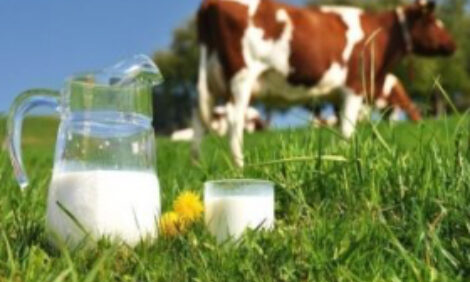



Can cattle keep their barns clean?
In cooperation with animal behaviour scientists from The University of Auckland in New Zealand and scientists from the Institute of Animal Welfare and Animal Husbandry in Celle, Germany, which belongs to the Friedrich-Loeffler-Institut (FLI), behavioural biologists at the Leibniz Institute for Farm Animal Biology (FBN) are investigating the excretion behaviour of cattle. Can cows keep their barn clean and protect the environment and themselves better against diseases?Pets are usually house-trained and even pigs (if possible) look for a secluded corner for defecating. The situation is completely different with cows. They go to the toilet wherever they happen to be. This has negative consequences for the environment and the animals themselves. The resulting ammonia emissions contribute to poor air and water quality. However, these issues could be significantly improved if cattle used a toilet for defecating and urinating, and the waste products could be separated. A dirty barn also has adverse effects on the hoof and udder health of animals and increases the effort required to keep living areas clean. An adult dairy cow produces on average 20 to 30 litres of urine and 30 to 40 kilograms of faeces per day.
Behavioural scientists want to improve barn hygieneIn a recent study, the scientists concluded that associative learning methods such as operant conditioning should allow for successful latrine training in cattle. The results of the study have now been published in the renowned journal Neuroscience and Biobehavioral Reviews*. The study analyses the neurophysiological basis of excretory behaviour in mammals and considered the likelihood that cattle can learn to control behaviour relevant to toilet training. It was concluded that cattle have the intelligence and neurophysiological capabilities to enable toilet training. The practical investigation of toilet training is currently being investigated at FBN with partners from Celle and New Zealand in a collaborative project funded by the Volkswagen Foundation to a value of 250,000 Euros..jpg)
Training is carried out in latrines specially constructed for calves, which have an easily identifiable green colour. Urination outside the latrine is signalled with a short shower, whereas in the latrine it is rewarded (see video).
"In a first step, we wanted to investigate to what extent cows can be trained to control excretion behaviour at all", said project leader at FBN Dr. Jan Langbein. "Overall, this is a very complex process. However, we can now answer this question with a clear yes, as actual experiments with the calves have shown. Operant conditioning techniques, which focuses on rewarding desired behaviour, has proved its worth. Practical methods to integrate toilet training into daily farm routines need to be further developed.
A practical breakthrough is still pending, despite research efforts in several other countries including Denmark, England, Estonia, Australia, Canada and the Netherlands. Therefore, the scientists from Dummerstorf and their research colleagues in Celle and New Zealand want to take the next big step forward. "If we really manage to use the intelligence of the animals to set up cow toilets in practice, everyone would benefit: The cows, the farmers and the environment", says project coordinator Lars Schrader from FLI.


